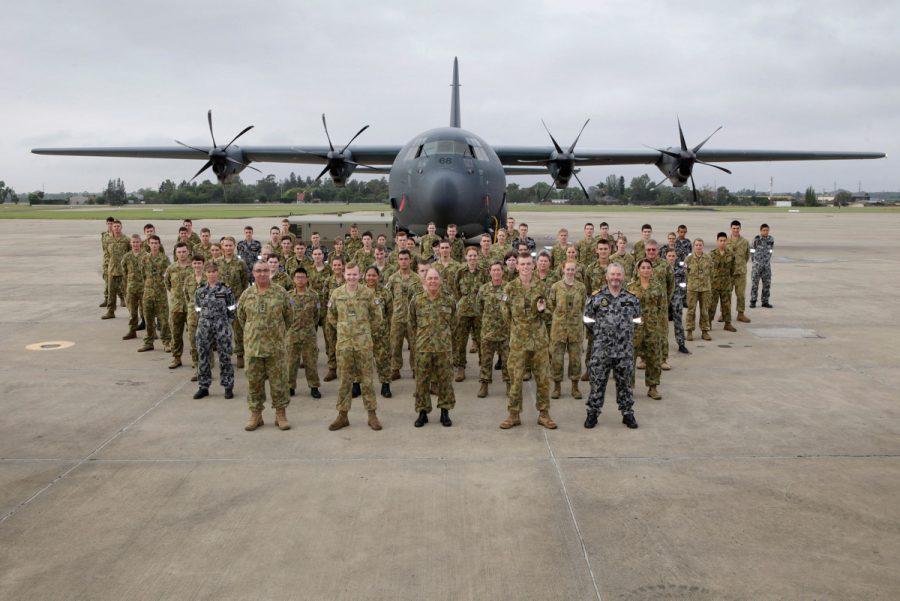
Four years have now passed since the release of the 2016 defence white paper, the most recent comprehensive review of Australia’s defence policy and capability. The main contours of that document were set down as early as 2014, which was arguably too early to take full account of the geostrategic implications of Russia’s invasion of Ukraine and China’s island-building in the South China Sea.
Since that time, the defence policy of Australia’s friends and allies in the northern hemisphere has changed dramatically and now focuses on major-power conflict with Russia and China. Calls for a new white paper or a reassessment of defence policy in Australia are also getting louder—Hugh White has provided the most eloquent and radical, but far from only, call for action.
Why did it take three years for the government to announce a ‘re-assessment of the strategic underpinnings of the 2016 Defence White Paper’? Compared with Scandinavia, NATO or Japan, Australia is less immediately exposed to Chinese and Russian military adventurism. In addition, three elements of the 2016 white paper have contributed to a relatively stable defence policy but also present particular challenges for the future:
- a strategic policy setting that is so undefined that proponents of various policies could project their preferences onto the document
- a stable defence investment plan that the Defence Department has been able to deliver with unusual fidelity, thanks to sufficient and predictable government funding, but which will deliver significant growth to critical capabilities only from the late 2020s at the earliest
- the development of a continuous shipbuilding program that has already consumed much leadership attention and infrastructure investment, but will now lock in a significant part of the defence budget in perpetuity in return for efficiency and strategic agility that will, if at all, be realised only in future decades.
Although the 2016 white paper set out force structure priorities that reflected the demands of air and maritime operations in the Indo-Pacific, it nominally gave equal priority to the defence of Australia and its approaches, to security in Australia’s immediate neighbourhood, and to a stable Indo-Pacific region and rules-based global order.
It was the first white paper not to prioritise the defence of Australia, but it contained clear acknowledgement of the practical challenges that this entails. And while it was vague on what a ‘rules-based order’ might be, not restricting defence objectives geographically made it clear that Australia would consider supporting international coalition operations globally. Giving a central place to the concept of the ‘Indo-Pacific’ acknowledged the major challenge of the rise of China.
Eschewing the politically charged term ‘self-reliance’, the paper emphasised the need for Australian forces to be able to operate ‘independently’ instead. In this way, the white paper successfully skirted all the major policy debates of earlier years, which perhaps accounted most for its generally positive reception.
The cost of this fudge is that Australia’s current strategic policy contains remarkably little strategy, beyond the notion that working in partnership with countries close and afar somehow helps manage strategic risk. The presence of the ADF in general, and the navy in particular, in the Southwest Pacific and the wider Indo-Pacific has increased significantly since 2016. But those deployments are no indication of a coherent strategic policy framework, which would lay out the political–military cause-and-effect relationships through which government thinks the existence (and activities) of the ADF will translate into security outcomes and explain what Australia seeks to achieve though increased cooperation. Indeed, the few sentences of the navy’s strategy for 2022 (‘Plan Pelorus’) that are devoted to how it should operate focus almost exclusively on maintaining partnerships ‘to know and understand our region, our friends, and our threat’. Whereas the navies of Britain and Japan have a fairly clear, geographically grounded understanding of their strategic role in the defence of their home islands, Australia’s still does not.
The army, too, has been trying to develop a new future concept to replace the 2011 Plan Beersheba and the mid-2000s vision of a ‘hardened and networked army’, which remained the foundation for the army’s structure and acquisition projects even in the 2016 white paper. Given Australia’s geography, the army has always found it difficult to define its role and mission in a regional context, beyond the need for stabilisation operations in the Southwest Pacific. Under the current chief, Lieutenant General Rick Burr, it underwent a period of genuine reflection and analysis, resulting in the 2018 concept of ‘an army in motion’, which highlights accelerating regional strategic change and the consequent need for the army to be adaptable.
Burr’s statement also emphasises the blurring lines between cooperation, competition and conflict, and the need to fight at greater ranges than the army has traditionally considered, and into other domains (including the sea). Altogether, it presents a well-reasoned argument that the stability and predictability on which Plan Beersheba was predicated are no more, but not quite yet a clear road map to a new structure and purpose.
At the same time, the operational tempo for regional engagement isn’t slowing down. Whereas events since 2014 have pushed the US and its NATO allies to refocus on the possibility of major war, in Australia the ‘Pacific step-up’ has had the opposite effect. As a result, the ADF today remains focused on strategic demands that are ‘like the past, only more so’. That this continues to be appropriate to deal with the risks from an increasingly assertive China, and an increasingly unreliable US, is a difficult judgement to sustain.
Reassessing what the ADF is for is thus the most urgent question facing the current defence review—and it’s not a question that can be answered by simply narrating developments in Beijing, Washington or Tehran. The next post in this series will propose one way in which it might be done.